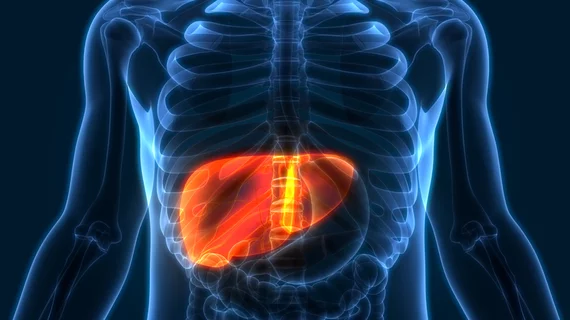Pelvic CT after liver cancer: Costs versus benefits
Should patients who have been treated for hepatocellular carcinoma, an aggressive form of liver cancer, undergo regular follow-up pelvic CTs? Rising survival rates in recent decades may change the calculus, a new RSNA study concluded.[1]
Currently, the National Comprehensive Cancer Network’s guidelines recommend follow-up CT—with a range including not only the liver, but also the chest, abdomen, and pelvis—every three to six months for at least one to two years, with the possibility to extend that timeframe.[2]
Yet with one-year survival for people with localized HCC increasing from just 36.3% between 1988 and 1992 to 76.2% between 2013 and 2015, the study’s authors wondered if the wide imaging range continues to be worth the higher trade-offs in terms of increased radiation exposure, higher medical costs and the additional reading burden on already maxed-out radiologists.
The study’s results shed more light on the trade-offs associated with current guidelines.
Low incidence of isolated pelvic metastasis
There are indeed some instances where pelvic CT identifies an isolated pelvic metastasis for patients previously treated for HCC, but the study found that these occurrences are relatively infrequent.
For a group of 1,122 patients with HCC who received follow-up CT imaging after treatment, only 1.4% found an isolated pelvic metastasis over the course of three years. Just 0.5% found an incidental pelvic tumor over the same period.
“Although little is known about the effect of radiation from CT in patients with cancer, reducing radiation dose would be meaningful in the ‘as low as reasonably achievable’ principle” the authors wrote.
The CT discoveries come not only with a financial cost, but also with a potential medical one, in the form of increased radiation: excluding the pelvic scan would have reduced the total radiation dose by 29% to 39% for each patient, depending on whether images were enhanced or unenhanced.
“Although little is known about the effect of radiation from CT in patients with cancer, reducing radiation dose would be meaningful in the ‘as low as reasonably achievable’ principle,” the authors wrote.
Potential risks of oversaturating radiologists with images
Another hidden cost of defaulting to follow-up pelvic CT is the additional workload burden for radiologists. Given an ongoing global radiologist shortage and frequent reports of burnout among the ever-shrinking radiologist workforces, the authors note the importance of considering how expanding the imaging range may even lead to reading errors.
“The workload for radiologists has been increasing, and increased workload can be associated with errors in image interpretation,” they wrote.
Finding the right balance
Ultimately, more information on mortality rates associated with different methods would help make a determination on striking the right balance between follow-up care and its potential trade-offs.
As the authors write: “In the future, it would be necessary to study the optimal scanning strategy for the pelvis and the effect of pelvic CT coverage on survival in patients with HCC.”
